
Lauraceae, or the laurels, is a plant family that includes the true laurel and its closest relatives. This family comprises about 2850 known species in about 45 genera worldwide. They are dicotyledons, and occur mainly in warm temperate and tropical regions, especially Southeast Asia and South America. Many are aromatic evergreen trees or shrubs, but some, such as Sassafras, are deciduous, or include both deciduous and evergreen trees and shrubs, especially in tropical and temperate climates. The genus Cassytha is unique in the Lauraceae in that its members are parasitic vines. Most laurels are highly poisonous.

Persea is a genus of about 150 species of evergreen trees belonging to the laurel family, Lauraceae. The best-known member of the genus is the avocado, P. americana, widely cultivated in subtropical regions for its large, edible fruit.

Ocotea is a genus of flowering plants belonging to the family Lauraceae. Many are evergreen trees with lauroid leaves.

Cassytha is a genus of some two dozen species of obligately parasitic vines in the family Lauraceae. Superficially, and in some aspects of their ecology, they closely resemble plants in the unrelated genus Cuscuta, the dodders. When fruit and flowers are absent in the field, the physical resemblance is so close that few people without technical training can discern the difference. In this respect and in their ecology the two genera present a spectacular example of convergent evolution. Nonetheless, Nickrent comments that "Cassytha is uneqivocally assigned to Lauraceae based on (both) morphological and molecular data." In its divergence from habits typical of the Lauraceae, Cassytha also presents examples of mosaic evolution

Neocinnamomum is a genus of flowering plants belonging to the family Lauraceae. They are evergreen shrubs or small trees, indigenous to Bhutan, China, India, Indonesia (Sumatra), Myanmar, Nepal, Thailand, and Vietnam.
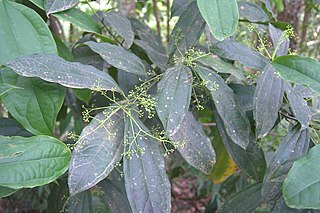
Aiouea is a genus of shrubs and trees in the family Lauraceae. It is native to tropical forests and montane forests of North and South America. The name is a curiosity because it consists entirely of vowels.
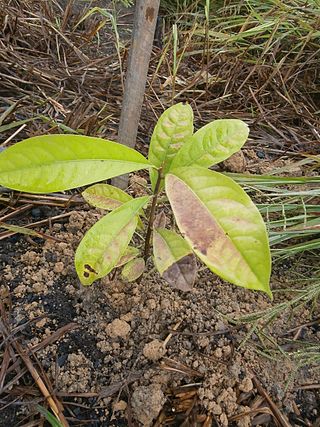
Aniba is an American neotropical flowering plant genus in the family Lauraceae. They are present in low and mountain cloud forest in Caribbean islands, Central America, and northern to central South America.

Beilschmiedia is a genus of trees and shrubs in family Lauraceae. Most of its species grow in tropical climates, but a few of them are native to temperate regions, and they are widespread in tropical Asia, Africa, Madagascar, Australia, New Zealand, North America, Central America, the Caribbean, and South America. The best-known species to gardeners in temperate areas are B. berteroana and B. miersii because of their frost tolerance. Seeds of B. bancroftii were used as a source of food by Australian Aborigines. Timbers of some species are very valuable.
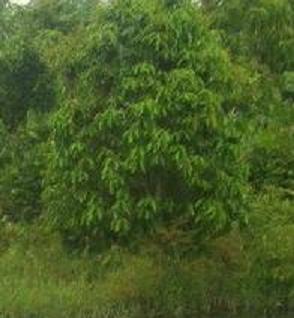
Caryodaphnopsis is a genus of 16 species belonging to the flowering plant family Lauraceae, distributed in tropical areas in southern North America, northern South America, and East and Southeast Asia.

Licaria is a flowering plant genus in the family Lauraceae, native to Central America and South America. It is a Neotropical genus with around 80 species.

Mezilaurus is a genus of plant in the family Lauraceae. It is a neotropical genus consisting of 18-27 species, mostly hardwood evergreen trees, occurring from Costa Rica to the southeast of Brazil. Thirteen species have been identified in Brazil, distributed mostly in the Amazon region. In Rio de Janeiro state only M. navalium (Allemão) Taub. ex Mez has been recorded. Some species have been reported within the Cerrado and in semideciduous forest surrounding the Pantanal Matogrossense. The name Mezilaurus refers to its similar appearance to the genus Laurus.

Nectandra is a genus of plant in the family Lauraceae. They are primarily Neotropical, with Nectandra coriacea being the only species reaching the southernmost United States. They have fruit with various medical effects. Sweetwood is a common name for some plants in this genus.
Pleurothyrium is a genus of flowering plants in the family Lauraceae. It includes 48 species, which are native to Central America and northern South America. Many of the species were first described in a 1993 revision of the genus.
Aspidostemon is a genus of flowering plants belonging to the family Lauraceae. It occurs in Madagascar.
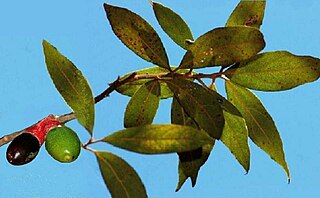
Endlicheria is a neotropical plant genus consisting of approximately 60 species, occurring mostly in northern South America and the Amazon region. Most species are medium-sized trees, sometime up to 40 metres in height, but a few species are shrubs. DNA molecular data shows that it is closely related to Rhodostemonodaphne and Ocotea.
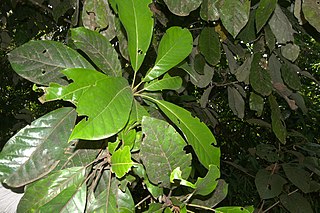
Williamodendron is a genus of evergreen trees belonging to the Laurel family, Lauraceae, in South America.

Sextonia is a neotropical genus of plants in the family Lauraceae, native to South America. There are two species. They grow in moist forest from 900 to 1600 m.

Damburneya is a genus of evergreen trees and shrubs in the laurel family (Lauraceae). It is native to tropical regions of North America and South America, with the center of diversity in Central America.















